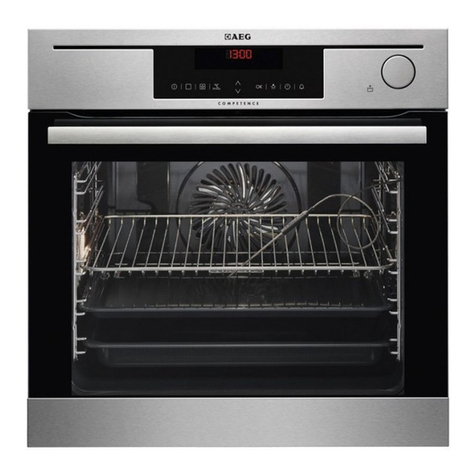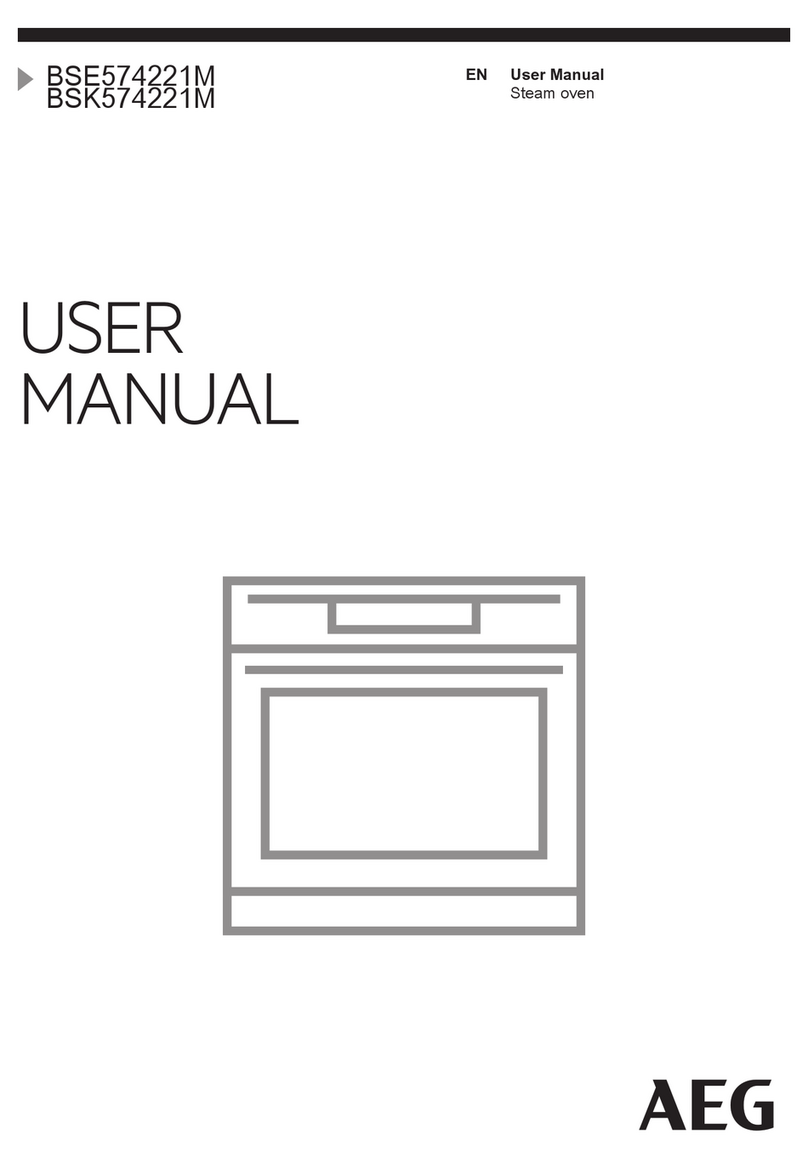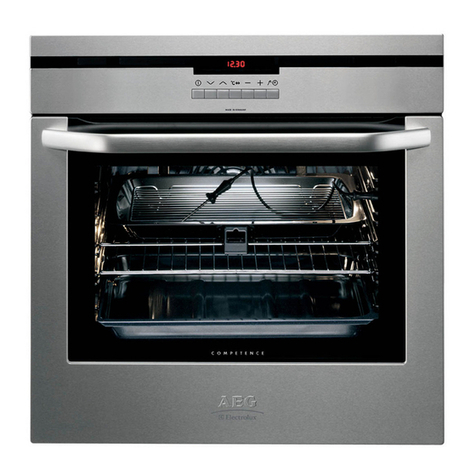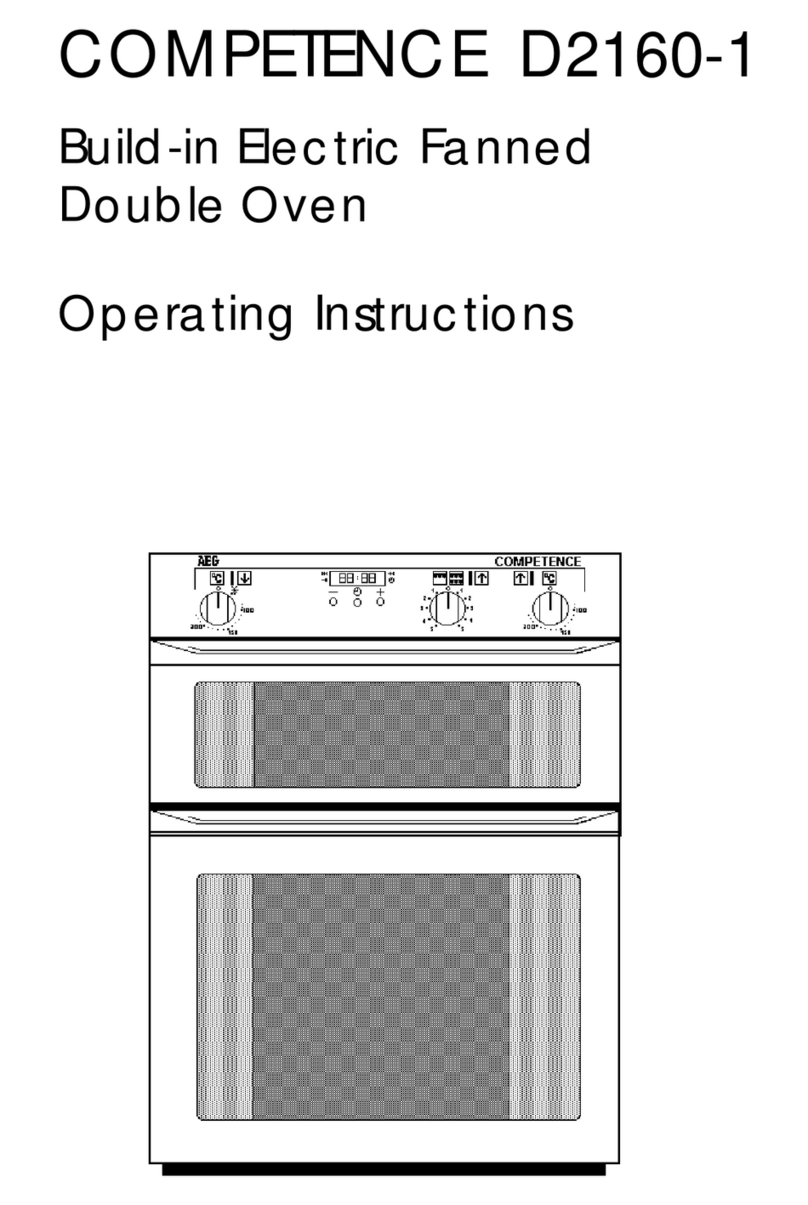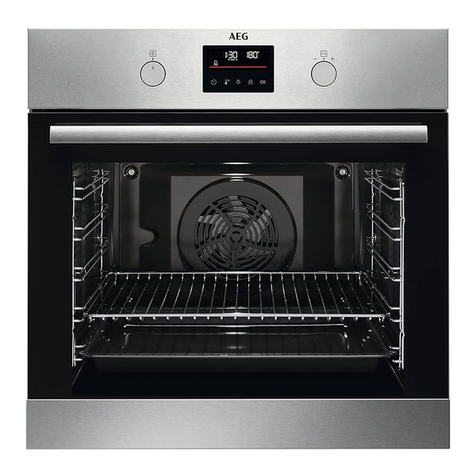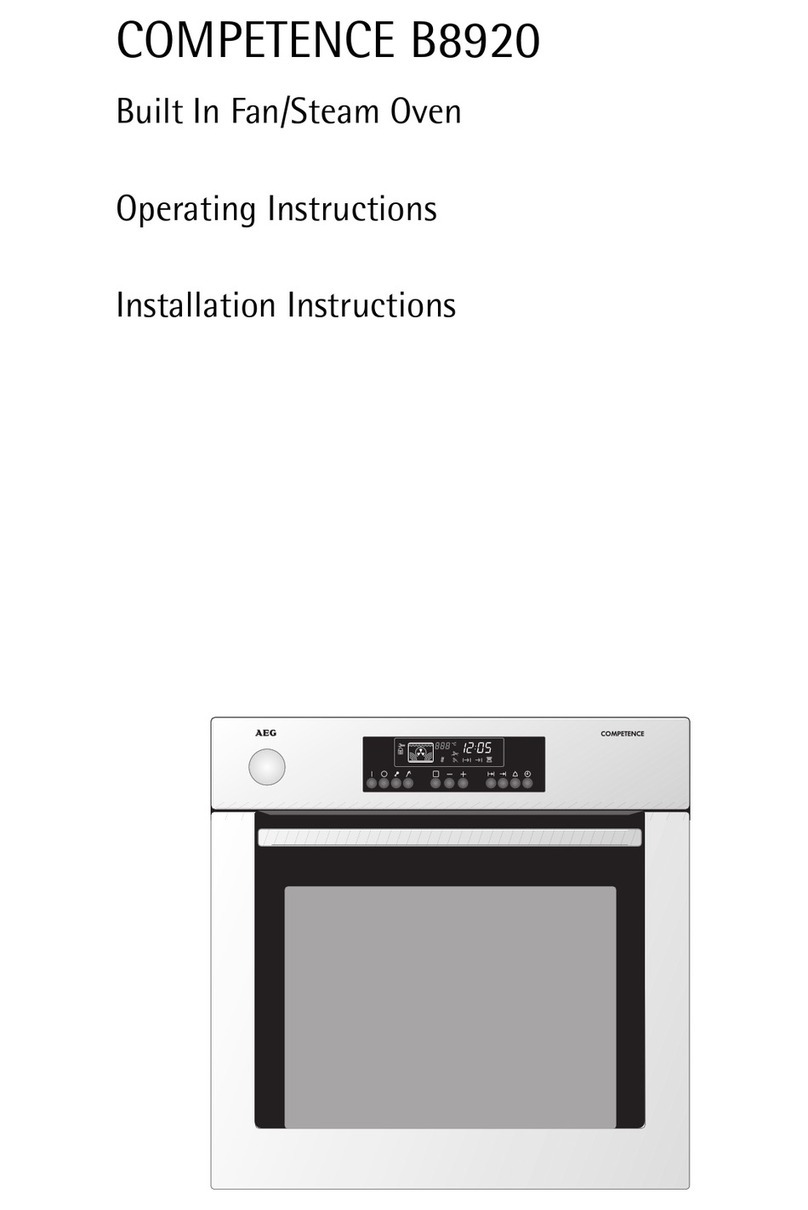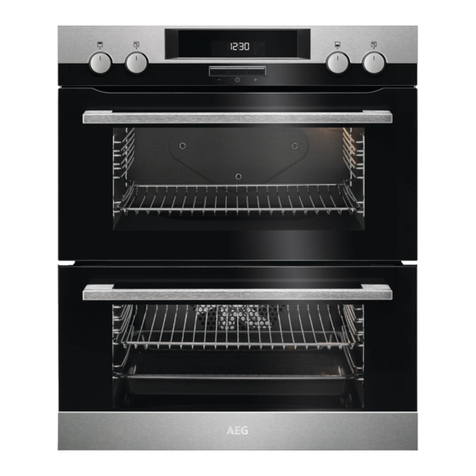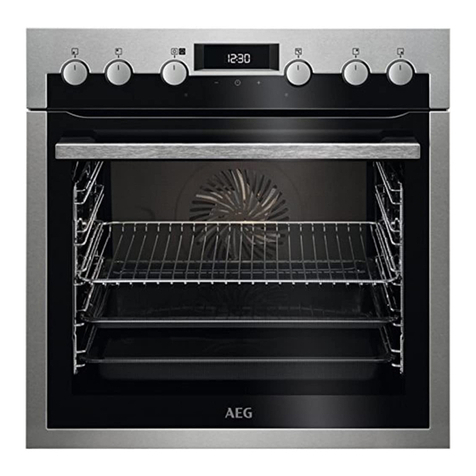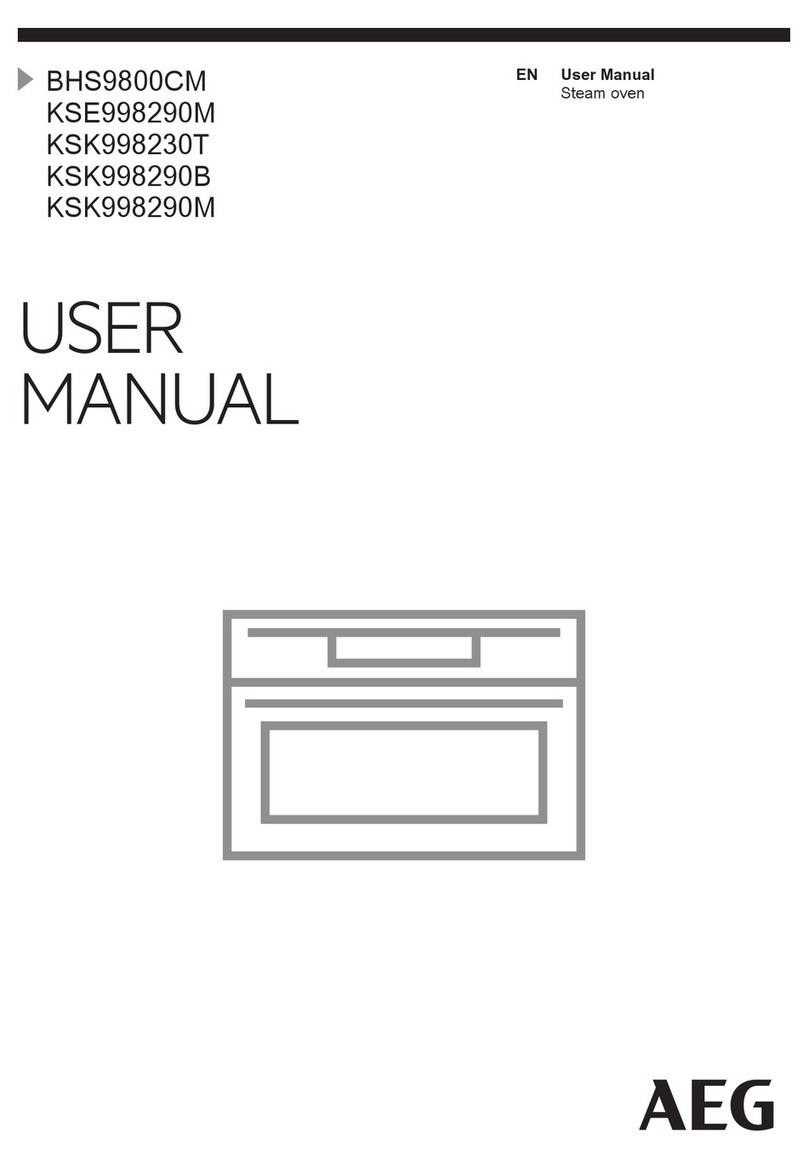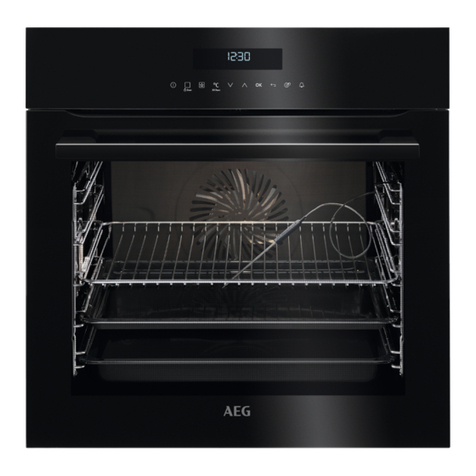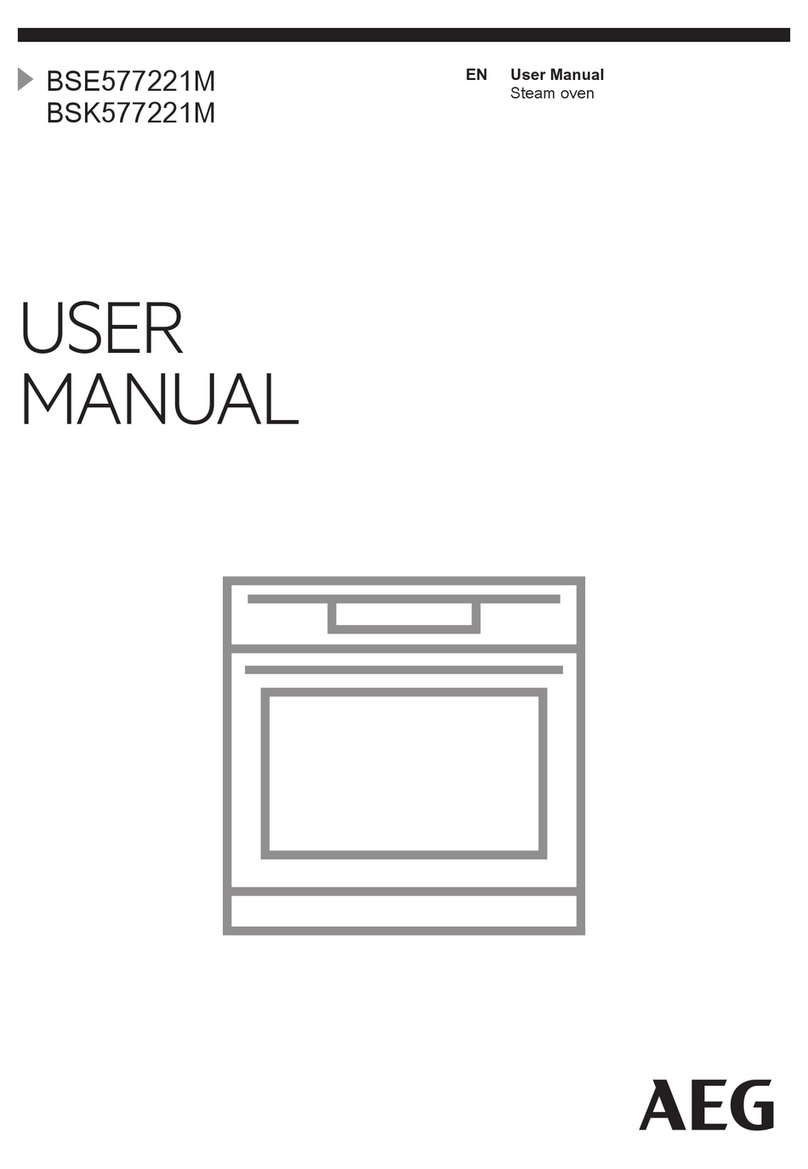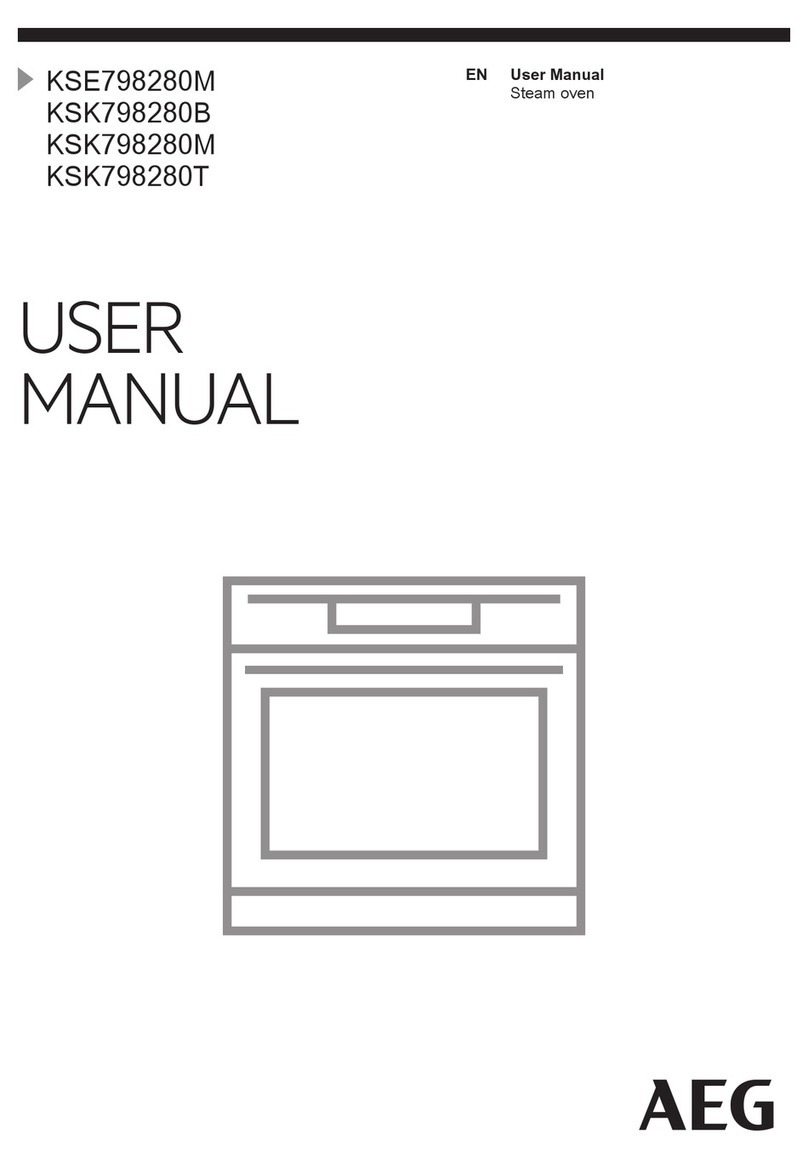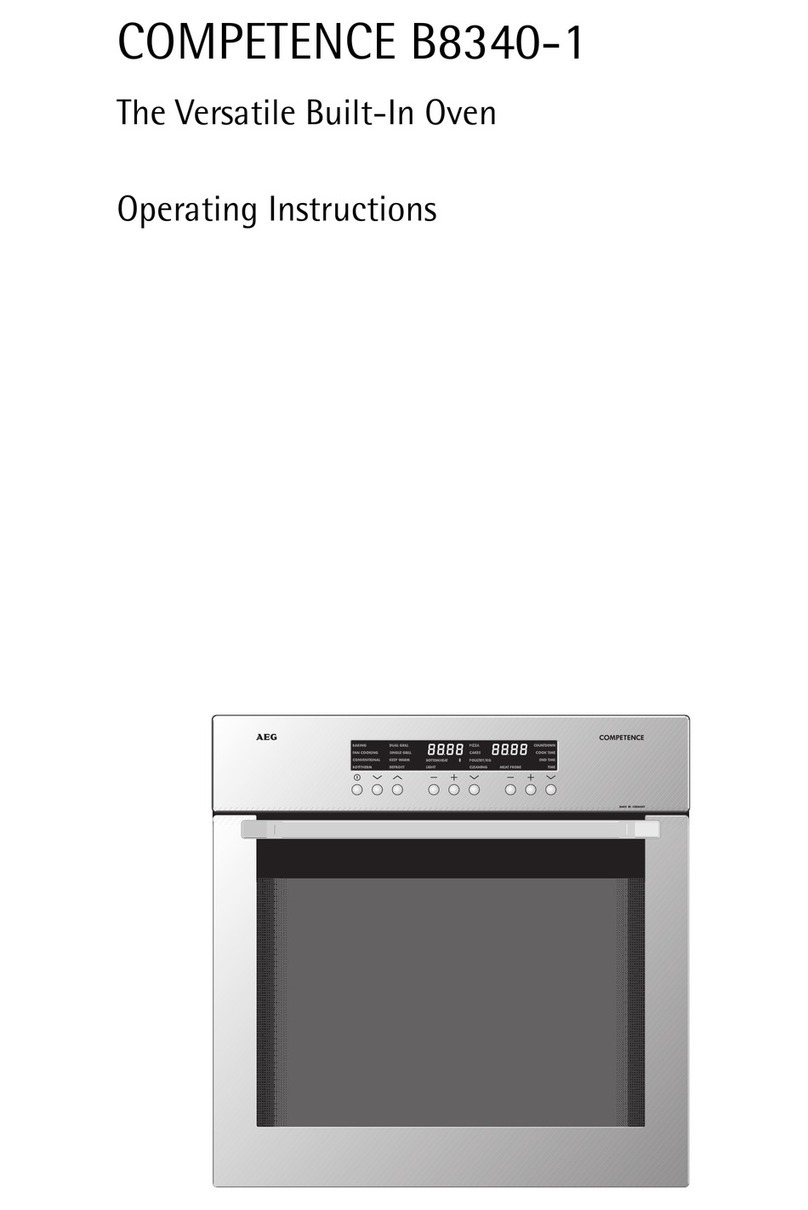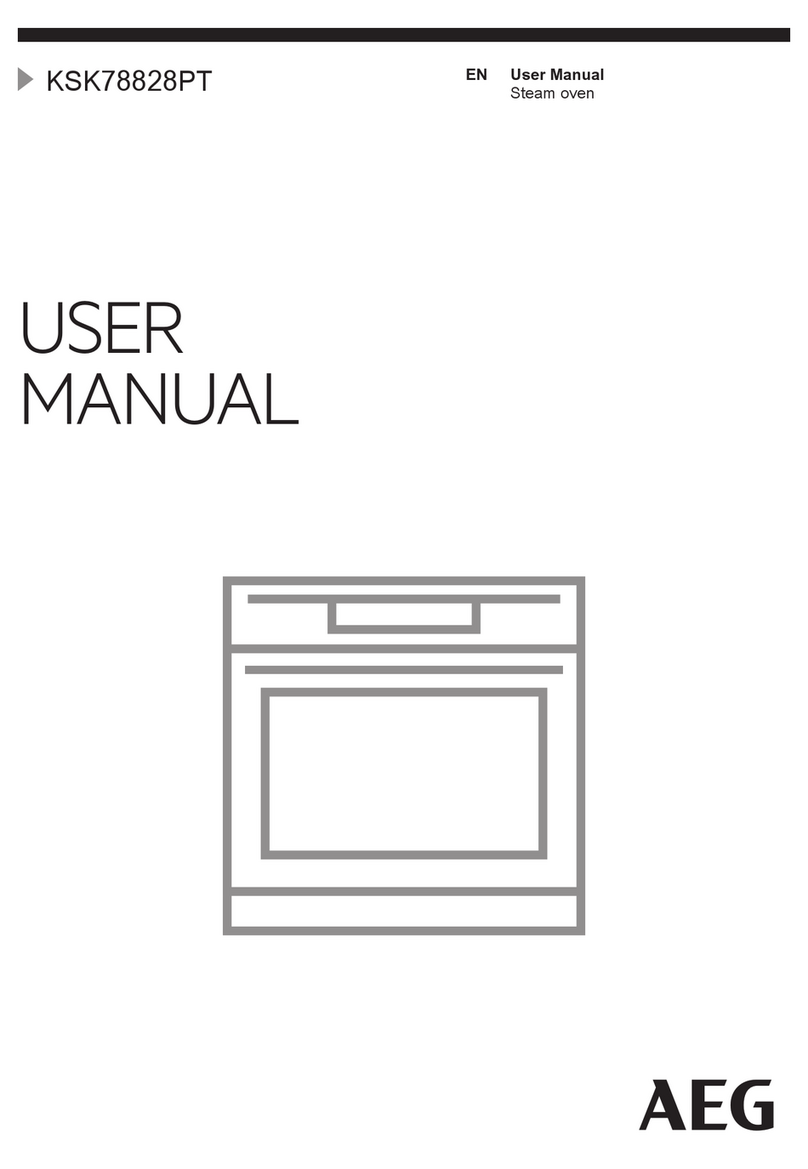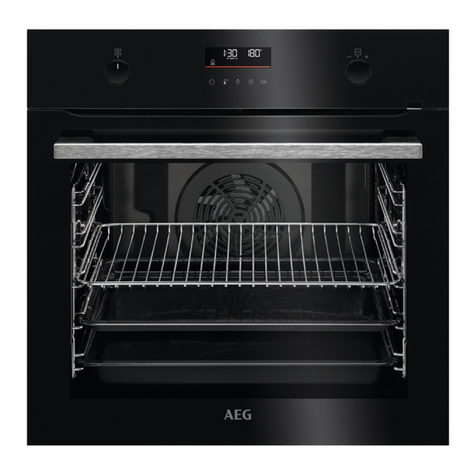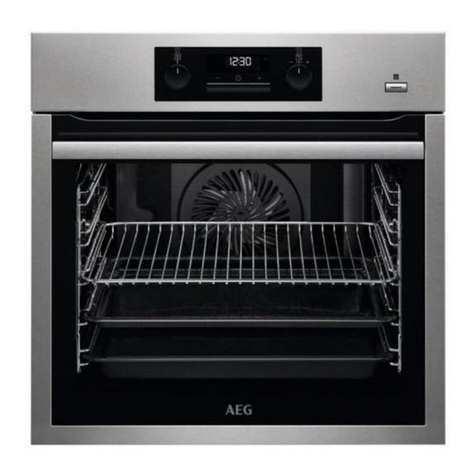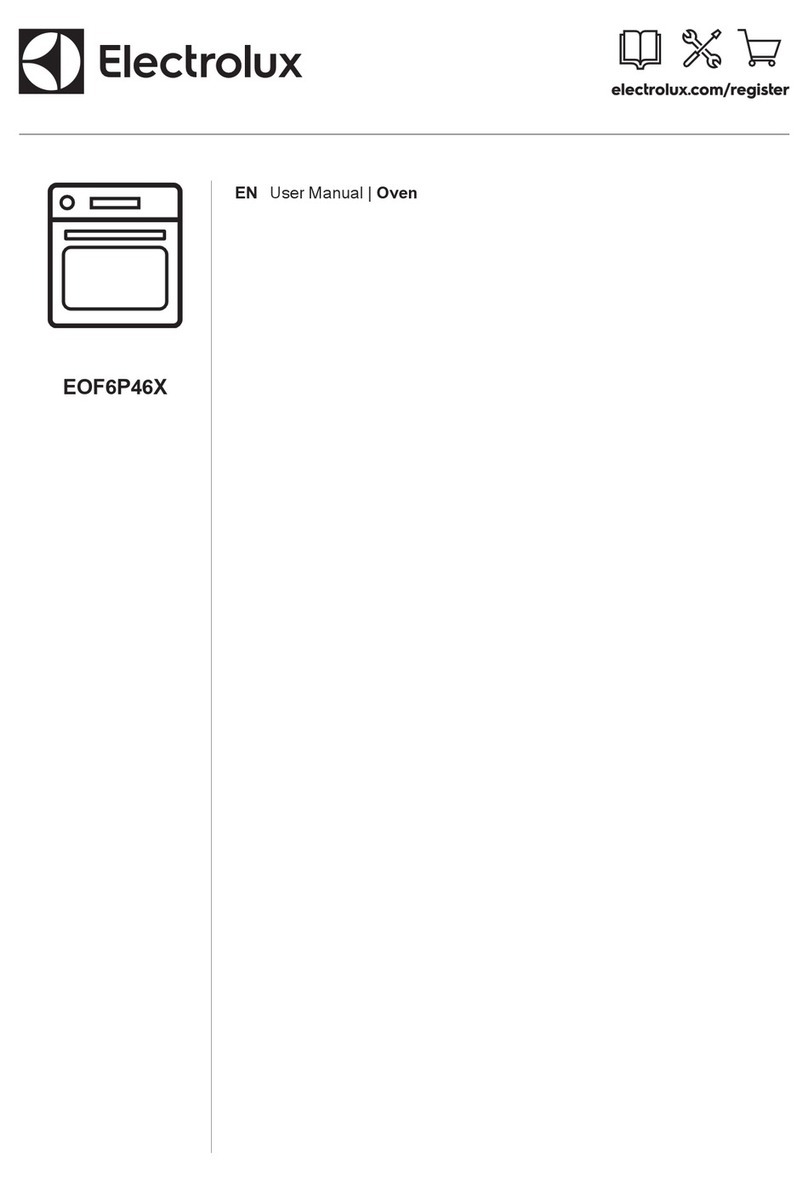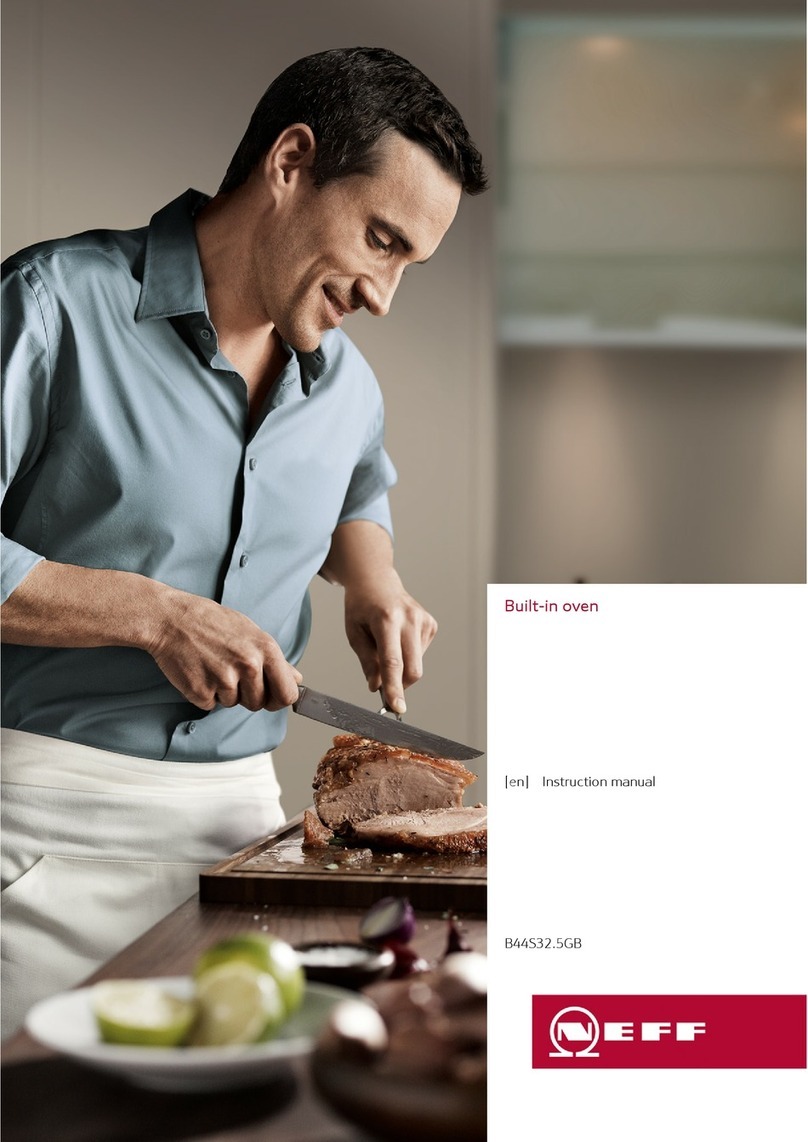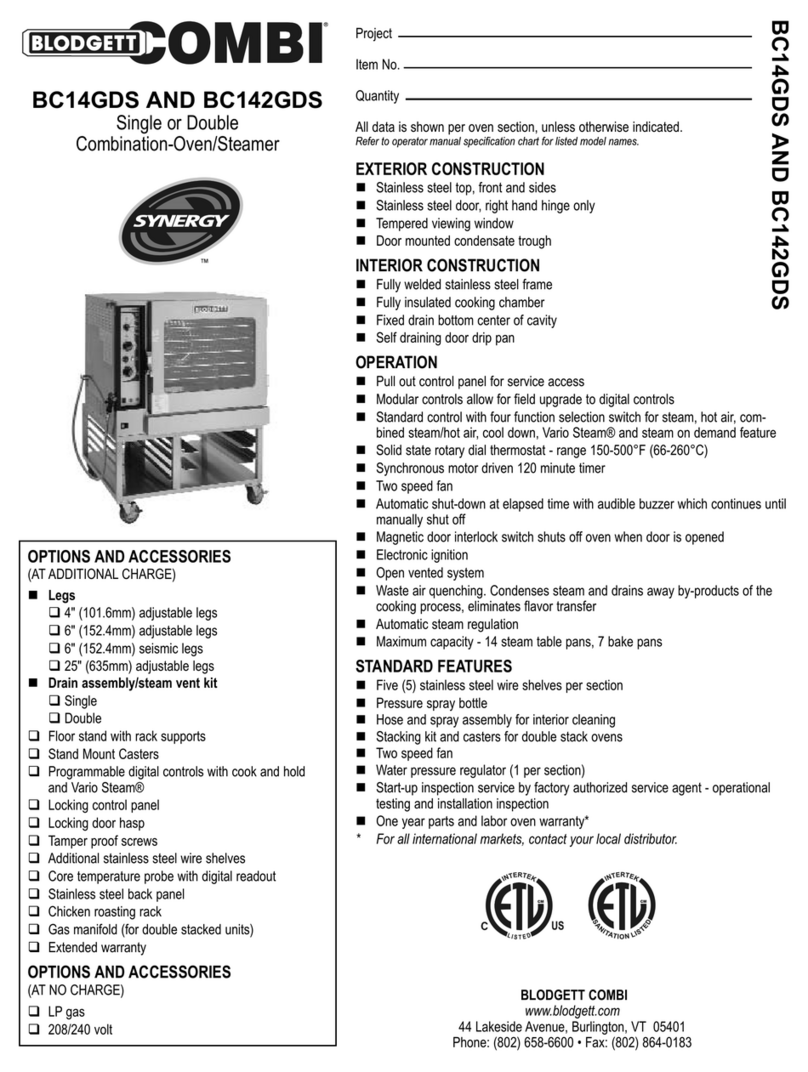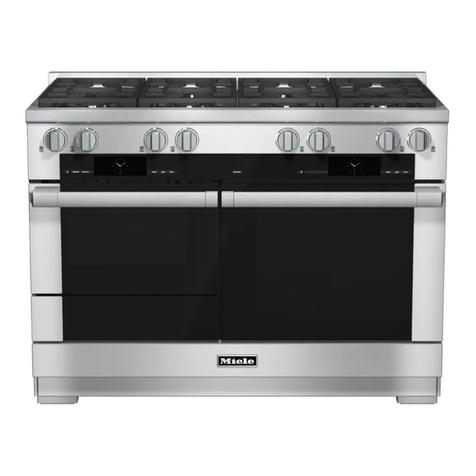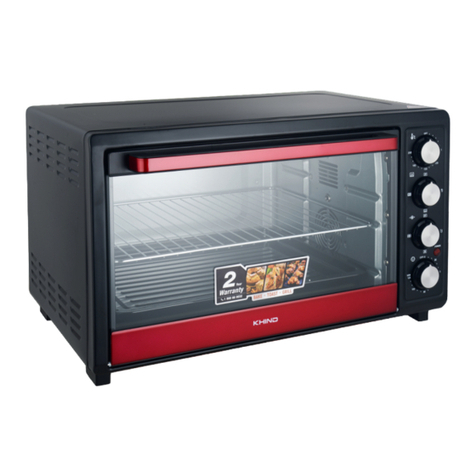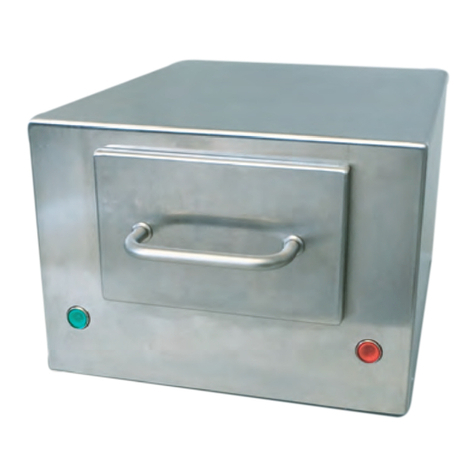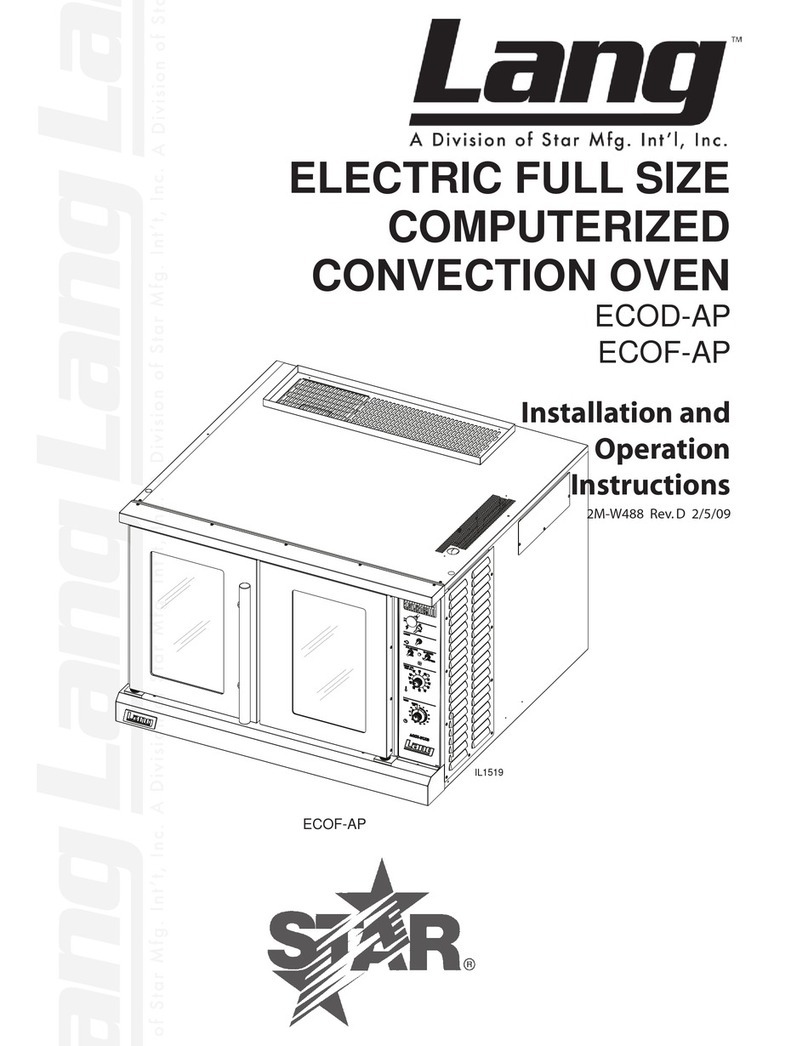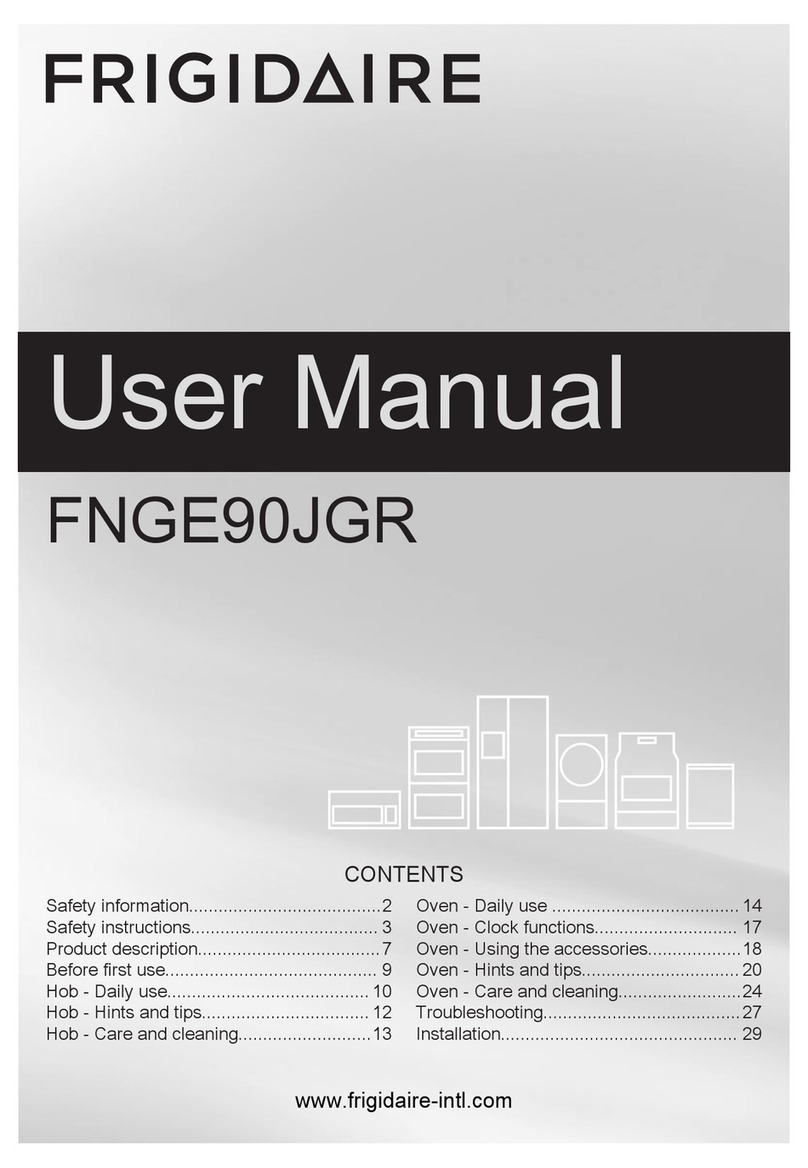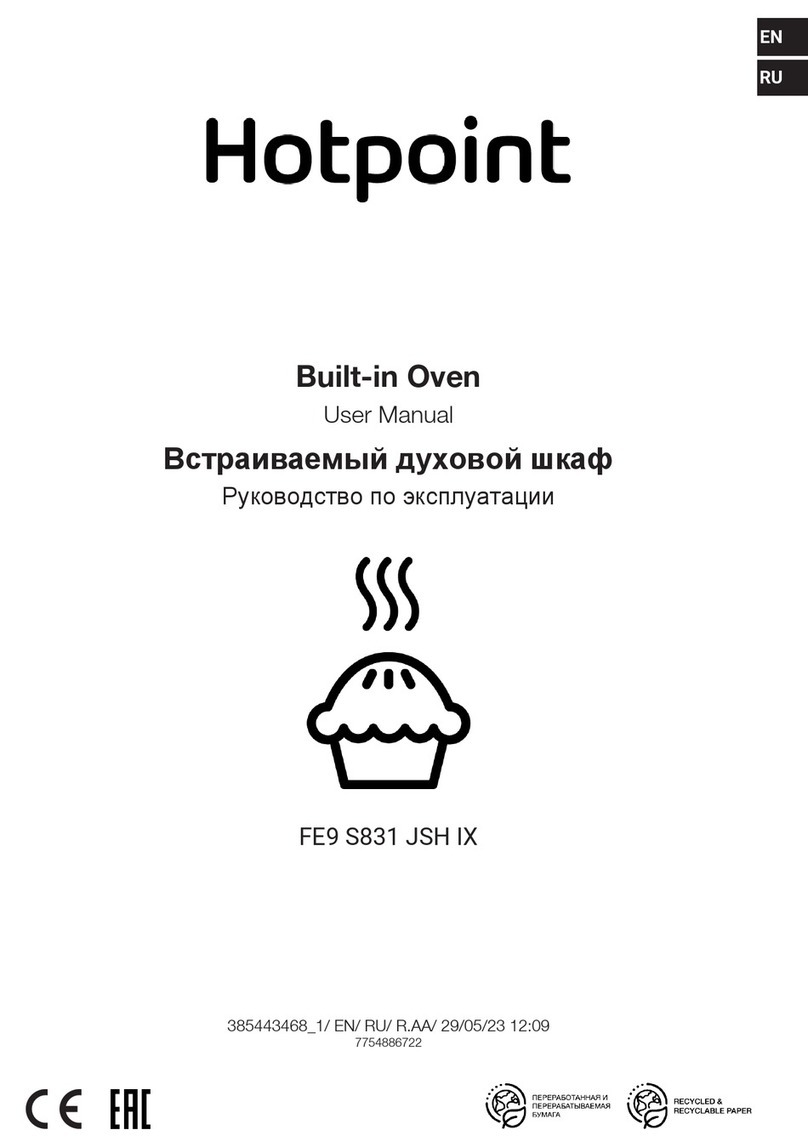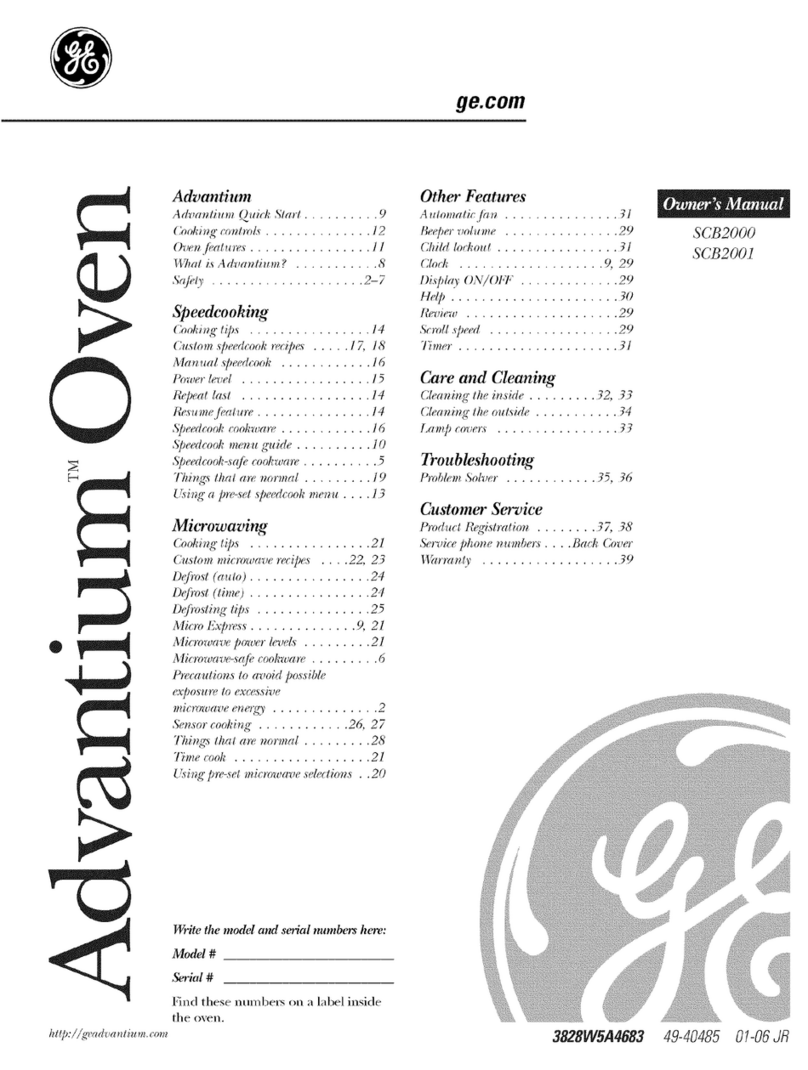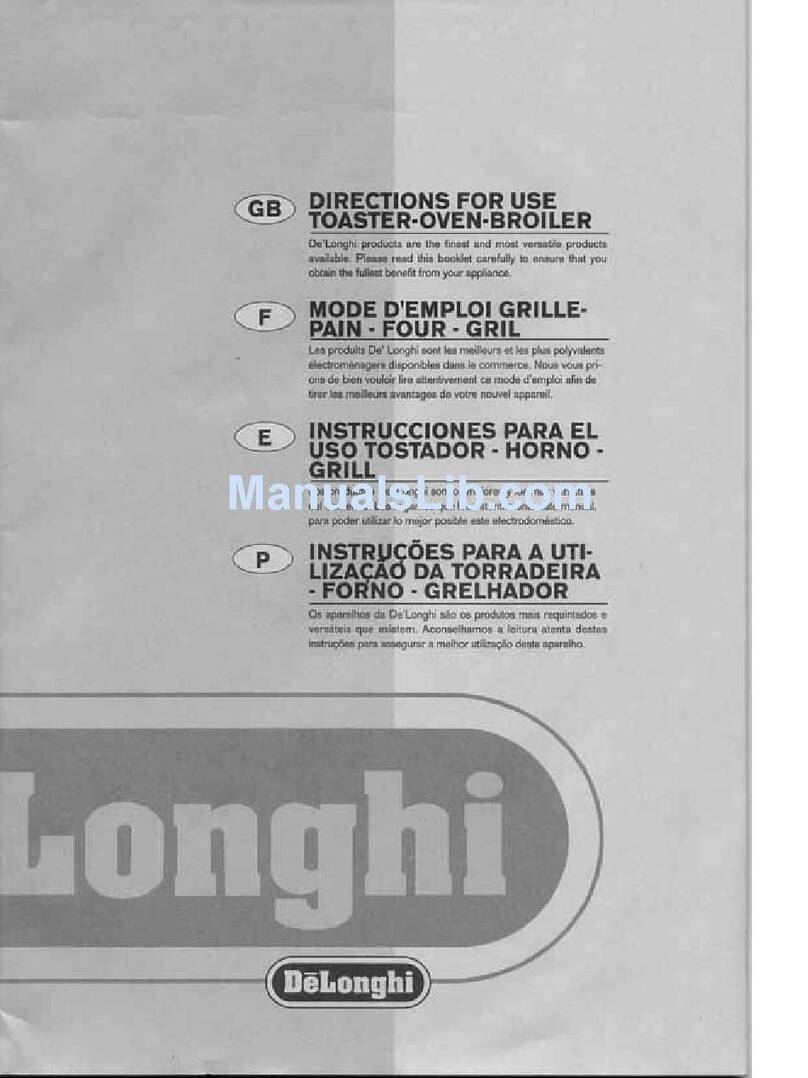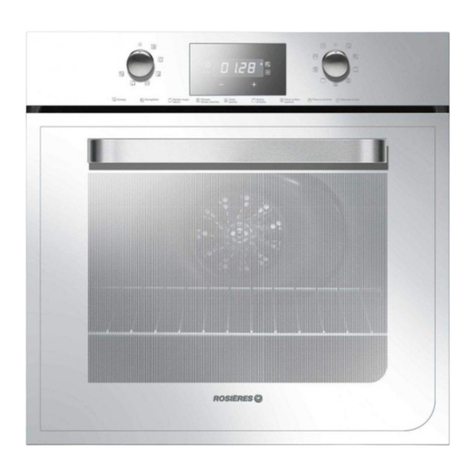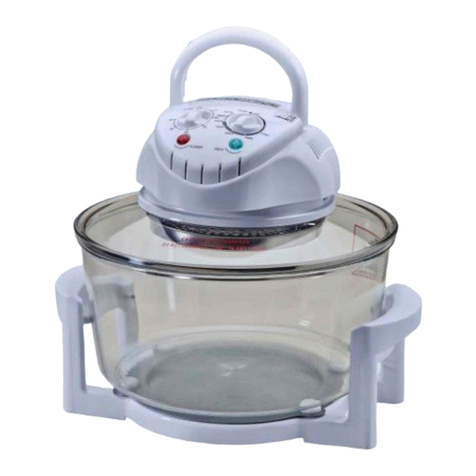• Use this appliance in a household en-
vironment.
• Do not change the specification of this
appliance.
• Make sure that the ventilation open-
ings are not blocked.
• Do not let the appliance stay unatten-
ded during operation.
• Deactivate the appliance after each
use.
• Be careful, when you open the appli-
ance door while the appliance is in op-
eration. Hot air can release.
• Do not operate the appliance with wet
hands or when it has contact with wa-
ter.
• Do not apply pressure on the open
door.
• Do not use the appliance as a work
surface or as a storage surface.
• Always keep the appliance door
closed when the appliance is in opera-
tion.
• Open the appliance door carefully.
The use of ingredients with alcohol
can cause a mixture of alcohol and air.
• Do not let sparks or open flames to
come in contact with the appliance
when you open the door.
• Do not put flammable products or
items that are wet with flammable
products in, near or on the appliance.
WARNING!
Risk of damage to the appliance.
• To prevent damage or discoloration to
the enamel:
– Do not put ovenware or other ob-
jects in the appliance directly on the
bottom.
– Do not put aluminium foil directly on
the bottom of the appliance.
– do not put water directly into the hot
appliance.
– do not keep moist dishes and food
in the appliance after you finish the
cooking.
– be careful when you remove or in-
stall the accessories.
• Discoloration of the enamel has no ef-
fect on the performance of the appli-
ance. It is not a defect in the sense of
the warranty law.
• Use a deep pan for moist cakes. Fruit
juices cause stains that can be perma-
nent.
2.3 Care and Cleaning
WARNING!
Risk of injury, fire or damage to
the appliance.
• Before maintenance, deactivate the
appliance and disconnect the mains
plug from the mains socket.
• Make sure the appliance is cold. There
is the risk that the glass panels can
break.
• Replace immediately the door glass
panels when they are damaged. Con-
tact the Service.
• Be careful when you remove the door
from the appliance. The door is heavy!
• Clean regularly the appliance to pre-
vent the deterioration of the surface
material.
• Remaining fat or food in the appliance
can cause fire.
• Clean the appliance with a moist soft
cloth. Only use neutral detergents. Do
not use abrasive products, abrasive
cleaning pads, solvents or metal ob-
jects.
• If you use an oven spray, obey the
safety instructions on the packaging.
• Do not clean the catalytic enamel (if
applicable) with any kind of detergent.
2.4 Internal light
• The type of light bulb or halogen lamp
used for this appliance, is only for
household appliances. Do not use it
for house lighting.
WARNING!
Risk of electrical shock.
• Before replacing the lamp, disconnect
the appliance from the power supply.
• Only use lamps with the same specifi-
cations.
ENGLISH 5

